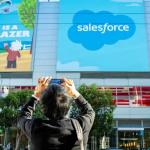It can take up to 35 pieces of data to create one personalised customer experience, according to MuleSoft. Yet, customers crave connected experiences. Customers volunteer information such as what they buy, where they buy it (online or at a store), if they contacted customer service, if they use a coupon, if they read your marketing emails, and on and on. Your customers never stop giving you valuable information about their preferences.
Now, customers want you to remember these interactions. For your brand to connect with them, now and in the future, with these preferences in mind. They want you to see them as individuals. They want you to provide them with the personalised experiences they prefer. According to the 4th Edition of the State of the Connected Customer report, 80% of customers say the experience a company provides is as important as its products and services. Customers feel so strongly about this, one in three would abandon a brand after only one negative experience.
Customer data increases exponentially
The amount of data organisations must connect, analyse, and act on continues to explode. Yet, only one-third of the average 900 applications enterprise organisations have is connected. It is no wonder nine in 10 IT leaders believe these data silos create unaddressed business challenges.
So, it’s time to ask: What if you could connect all those data points to power all aspects of your business?
This question is creating massive hurdles for many companies across every industry. But this isn’t something IT leaders can ignore if they want to stay competitive and meet evolving customer needs. Instead, a data-driven business should be a priority now — if it wasn’t before 2020. Seventy-two percent of those surveyed in a recent report say experimentation with and investment in digital technologies have played a key role in helping them navigate the crisis. Sixty-seven percent of those same respondents invested more than industry peers in digital-related capital expenditures.

You know there is a better way. Whether it is for your salespeople that spend two-thirds of their time not selling, or for your IT team who spends time on projects that aren’t business-critical. Maybe it is for the customer service people who spend time answering the same questions over and over again. Whomever it is for in your organisation, you know productivity and morale improvements are necessary. That data is the key.
Employee experience supports customer success
Not only should your technology bring you and your customers closer, but it should also support your employees in their work so they can be the glue to keep your customers close. You can use Salesforce Customer 360, the MuleSoft Anypoint Platform, and Slack to ensure a superior employee experience. It’s time you discover what other innovative companies have: Better employee experiences lead to better customer service experiences. That all leads to business growth.
As businesses work to obtain their footing in a changing world, most (87%) IT and business leaders feel their alignment has improved over the past year. For example, INSEAD CIO Mr. Choo Tatt Saw knows increasing employee productivity means better customer service. “MuleSoft’s Anypoint Platform’s API capabilities enabled us to implement automated scheduling and course bookings — improving the efficiency and productivity of our staff. Now, they can focus on higher value tasks instead of manual work.” Additionally, connecting systems through one integrated platform enabled INSEAD to provide a 360-degree view of their data, which in turn powered innovation and cut down on development time from three months to two days.
This type of flexible and secure technology should be at the heart of your digital transformation. As you evaluate solutions, it is crucial to get a trusted technology partner and platform capable of adjusting as your organisation and market needs it to.
Flexible technology is the answer
The MuleSoft Anypoint Platform provides this flexibility. It uses application programming interfaces (APIs) to connect the data from your Salesforce CRM to Tableau to visualise that data. It is possible to use Slack as a frontend interface that can enhance inter and intradepartmental communication.
The current business landscape is still evolving as the pandemic economy continues. Businesses that want to continue growing need a flexible platform that can respond quickly to the market. A recent study shows a correlation between those that have successfully navigated the ongoing pandemic and have invested, more than their peers, in experimentation in digital technologies. Whether that is the evolving market of today where coronavirus variants are now surging or the market on the horizon with the return to schools and hybrid work schedules.
What’s next?
The only way to prepare for the unimaginable is to do the best you can with the data you have now. Have reliable, secure, and flexible technology built for agility. Finally, prepare to look at novel business challenges with a “beginner’s mind” when the situation demands it.
Given everything that’s happened since March 2020, are you ready for the next step in your digital transformation? See how MuleSoft (with Salesforce, Slack, and Tableau) can provide your customers with the connected experiences they want — faster.
Go ahead, take the next step.

























